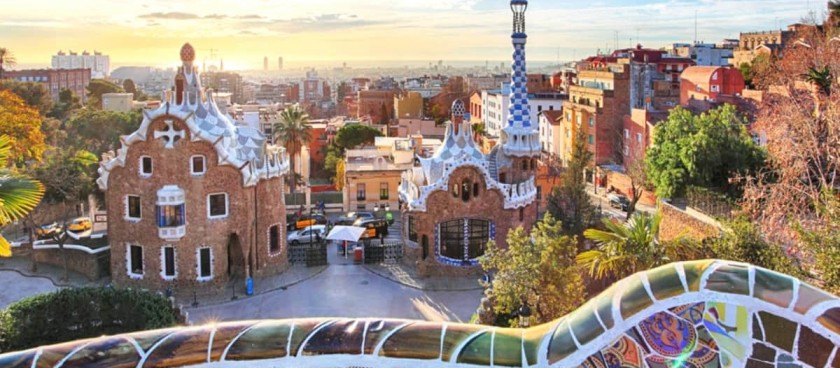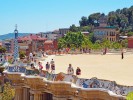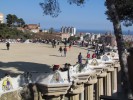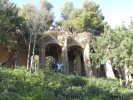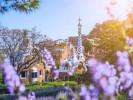- #ES14
- Carrer d'Olot, s/n, 08024 Barcelona, Spain
- +34934091831
- https://parkguell.barcelona/
- Working hours*:
8:00-21:30
Last entering 20:30 - Prices*:
General ticket - 10 €
Children from 0 to 6 years old - 0 €
Children from 7 to 12 years old - 7 €
Over 65 years old - 7 €
Disabled person + accompanying person - 7 € - * - opening and closing times as well as entrance prices, are subject to alterations without notice. Visitors are advised to check before visiting.
- 41.4144930, 2.1535990 Copy to clipboard Copy
-
#Family time , #Parks
The park is a city green area, a place where local residents from the surrounding neighbourhoods can enjoy themselves and relax.
76,000 people live in the surrounding area. These are highly-populated and built-up neighbourhoods —just like most of the City of Barcelona—, so the park's size and characteristics help to ease urban pressure and improve the area's environmental quality, along with the well-being of local residents.
Therefore, the park is a relax place where local residents can and enjoy themselves and a place that pedestrians can pass through. Other initiatives that have also helped to create a more relaxed, healthier environment are traffic pacification, expanding safe areas for pedestrians and cyclists and turning some of the surrounding streets into pedestrian precincts.
Park Güell is the reflection of Gaudí's artistic plenitude, which belongs to his naturalist phase (first decade of the 20th century). During this period, the architect perfected his personal style through inspiration from organic shapes. He put into practice a series of new structural solutions rooted in the analysis of geometry. To that, the Catalan artist adds creative liberty and an imaginative, ornamental creation. Starting from a sort of baroquism, his works acquire a structural richness of forms and volumes, free of the rational rigidity or any sort of classic premises. In the design of Park Güell, Gaudí unleashed all his architectonic genius and put to practice much of his innovative structural solutions that would become the symbol of his organic style and that would culminate in the creation of the Basilica and Expiatory Church of the Holy Family (Catalan: Sagrada Familia).
Güell and Gaudí conceived this park, situated within a natural park. They imagined an organized grouping of high-quality homes, decked out with all the latest technological advancements to ensure maximum comfort, finished off with an artistic touch. They also envisioned a community strongly influenced by symbolism, since, in the common elements of the park, they were trying to synthesize many of the political and religious ideals shared by patron and architect: therefore there are noticeable concepts originating from political Catalanism – especially in the entrance stairway where the Catalan countries are represented – and from Catholicism – the Monumento al Calvario, originally designed to be a chapel. The mythological elements are so important: apparently Güell and Gaudí's conception of the park was also inspired by the Temple of Apollo of Delphi.
On the other hand, many experts[who?] have tried to link the park to various symbols because of the complex iconography that Gaudí applied to the urban project. Such references go from political vindication to religious exaltation, passing through mythology, history and philosophy. Specifically, many studies claim to see references to Freemasonry, despite the deep religious beliefs of both Gaudí and Count Güell. These references have not been proven in the historiography of the modern architect. The multiplicity of symbols found in the Park Güell is, as previously mentioned, associated to political and religious signs, with a touch of mystery according to the preferences of that time for enigmas and puzzles.
